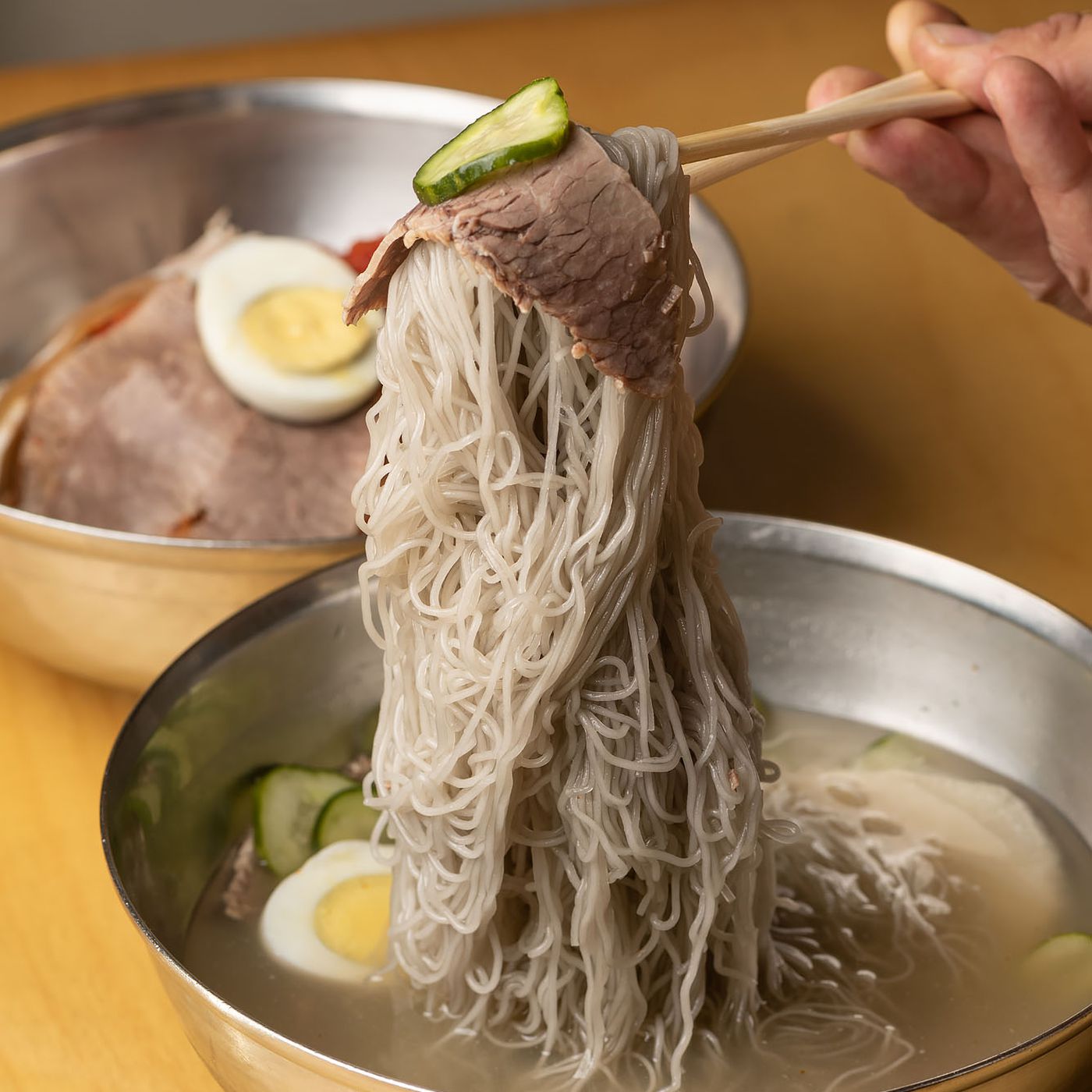Cold noodles (naengmyeon – 냉면) is one of the typical dishes of the Korean peninsula (including South Korea and North Korea). This is also the most favorite summer dish of Koreans, because the coldness of this noodle dish relieves the heat of the hot summer weather. Not only that, cold noodles are also a typical Korean dish in the eyes of international friends.
Origin of cold noodles
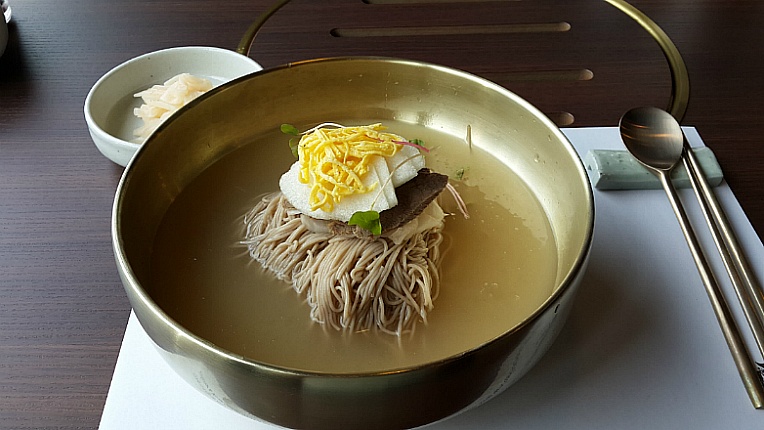
Few people know that in Korea, noodles are the earliest starchy dish, even before bread.
Cold noodles originated in Pyongyang during the mid-Goryeo period. According to a 1973 North Korean cooking book, cold noodles first appeared in the Andong area of the Taedong River (present-day Pyongyang). The practice of kneading buckwheat flour to make noodles has a long history. Ancient records from the mid-Goryeo period describe the technique of “mixing noodles into cold broth and eating them.”
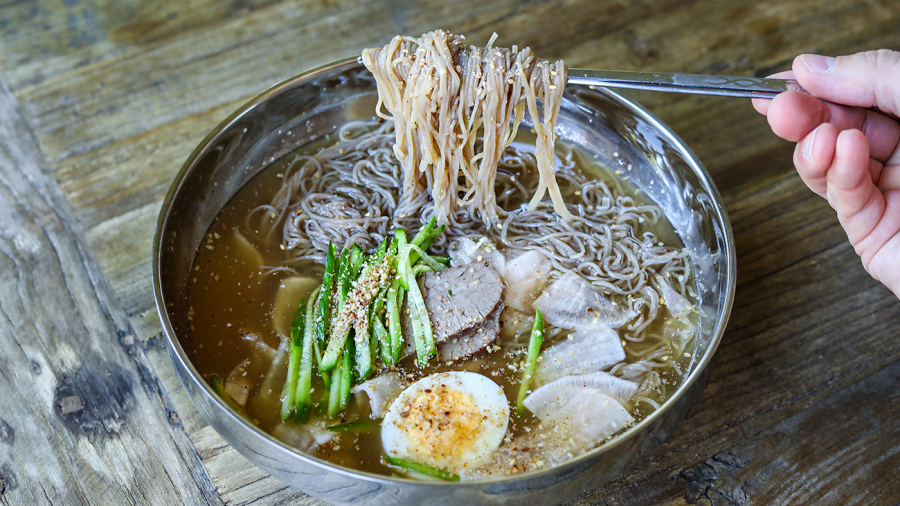
According to legend, King Gojong of the Joseon Dynasty loved cold noodles. He bought noodles from a noodle shop outside Deoksugung Palace, added meat, pears, and pine nuts, and ate them. This noodle dish was later adapted and became a dish served in the royal court whenever the weather turned hot.
Gradually, this unique noodle dish was enjoyed by the aristocracy in the summer because it was an easy-to-eat drink. In addition, the ingredients in cold noodles had a very good effect in regulating the body in hot weather.
Later, when ice was mass produced, cold noodles became more popular because the recipe was simple, the ingredients were easy to find, and it was easy to prepare.
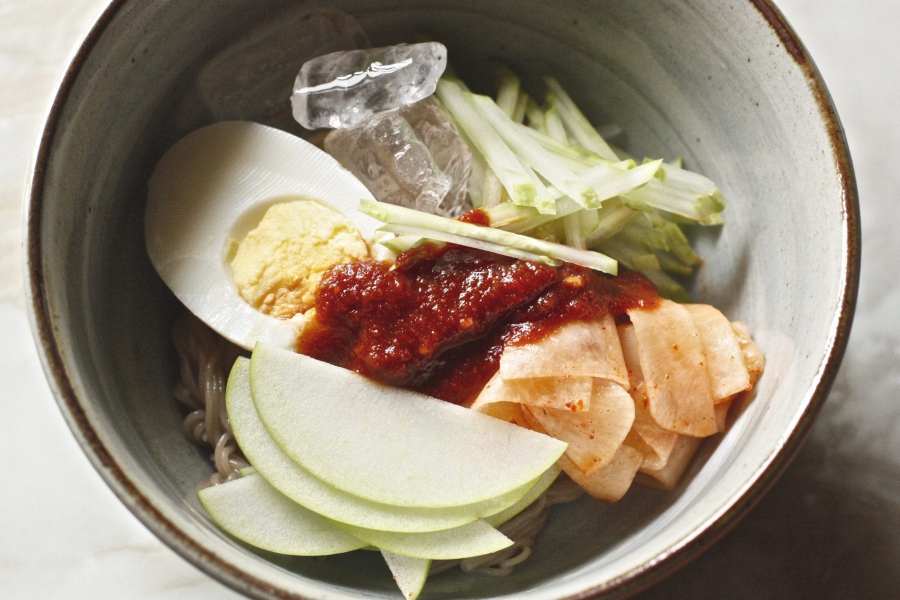
Today, cold noodles have become a highlight in Korean culinary culture. Among the countless liquid dishes in the world, cold noodles are perhaps the only dish that is served with ice.
Cold noodles in Korean cuisine
Unlike other Asian countries, for example, Vietnam considers rice as the main source of starch, Korean cuisine has diverse changes in starch dishes: rice, noodles, rice cakes... In which, noodles are considered the pride of Koreans because of their diverse preparation and delicious flavor.
Cold noodles are usually made from buckwheat flour, arrowroot flour, sweet potato flour, potato flour... so they are darker in color and chewier than regular noodles.

Korean cold noodles can be stir-fried noodles, stir-fried noodles, dry noodles, or noodles in a refreshing, cold broth. They are often served in iron bowls with cucumbers, Korean pears, slices of pickled radish, boiled eggs, or beef. Traditionally, the long noodles are not cut, as they symbolize longevity and health.
Cold noodles
Cold noodles often appear in Korean movies. However, have you ever wondered why each cold noodle movie is different? Just like instant noodles, there are instant noodles, beef noodles, rib noodles, etc., cold noodles also have many types. So many that no one knows exactly how many types there are, including Koreans or North Koreans. In general, a bowl of cold noodles will usually have cucumbers, boiled eggs, sesame seeds and a few slices of pear. Each type of cold noodles will have different processing methods and additional ingredients. Below are 9 types of cold noodles familiar to Korean people.
Naengmyeon
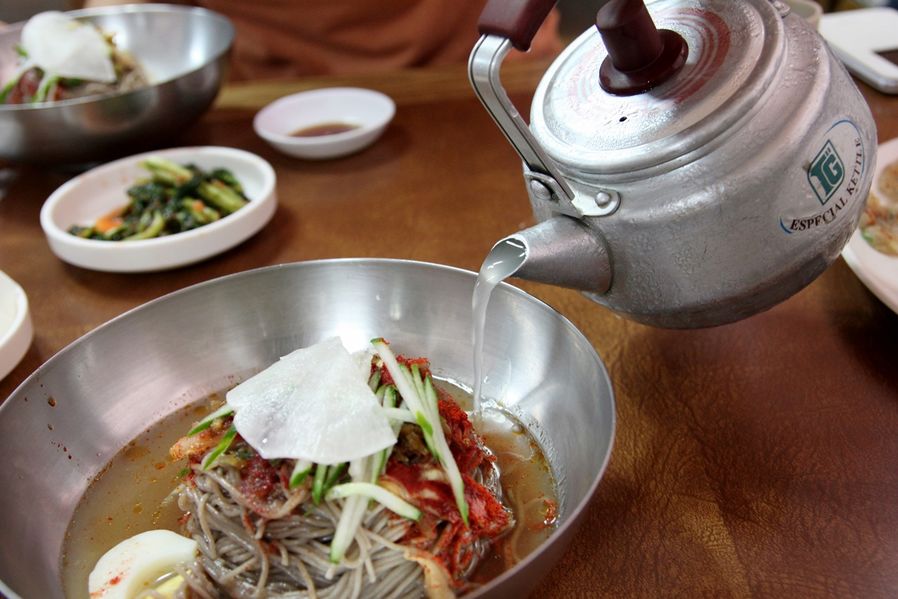
There are two types of Naengmyeon: Naengmyeon-mul and Naengmyeon-bibim. The basic difference between the two is the broth and the texture of the noodles.
Naengmyeon-mul is eaten with cold broth while Naengmyeon-bibim is mixed with spicy sauce with the same ingredients as bibimbap rice. As for the noodles, because they are made from potato or sweet potato starch, the noodles in Naengmyeon-bibim are chewier than Naengmyeon-mul noodles made from buckwheat flour.
Makguksu
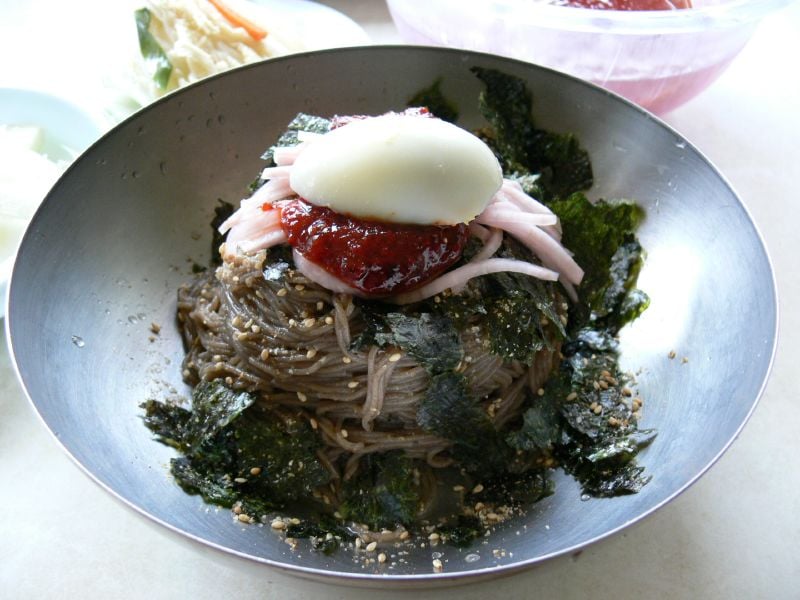
The name of this Korean cold noodle dish is inspired by its presentation. In Korean, “Mak” means “circle” and “guksu” means “noodles”, “circle noodles” because in the middle of the bowl, the noodles will be rolled into a round cylinder, when enjoying it, the diner will have to break that cylinder.
Kongguksu
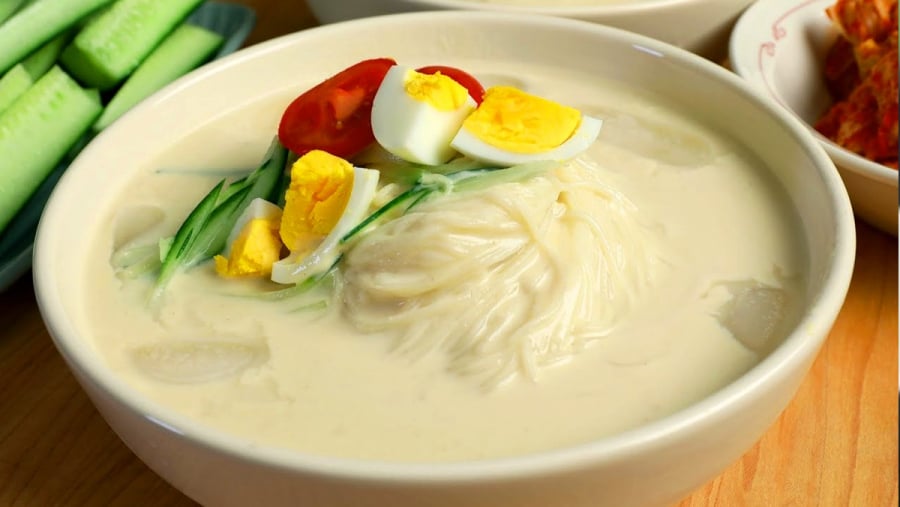
Unlike other Korean cold noodles, Kongguksu's broth is made from a mixture of ground soybeans and salt. Kongguksu cold noodles are made from vegan ingredients such as cucumbers and radish kimchi, creating a wonderfully refreshing feeling for hot summer days.
Jjolmyeon
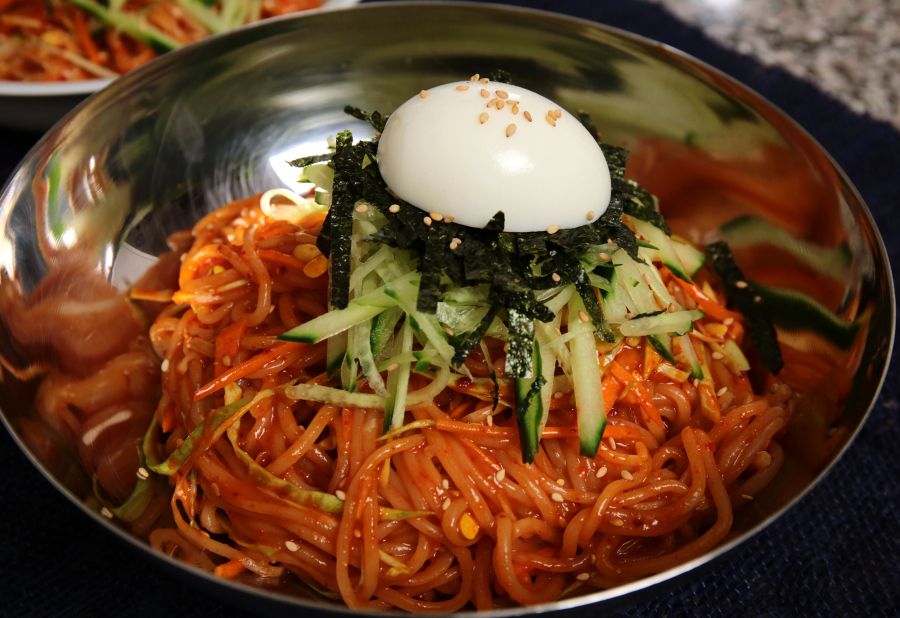
Similar to Naengmyeon, Jjolmyeon is not served with broth but mixed with a sweet sauce. Korean cold noodles Jjolmyeon is a combination of many ingredients such as bean sprouts, boiled eggs, cucumbers with red sauce so it has an extremely attractive and eye-catching color.
Milmyeon

The only difference from the above Korean cold noodles is that Milmyeon has noodles made from wheat - due to the scarcity of buckwheat ingredients during the Korean War. Besides, like Naengmyeon, Milmyeon is also served in two styles.
Naeng-kalguksu
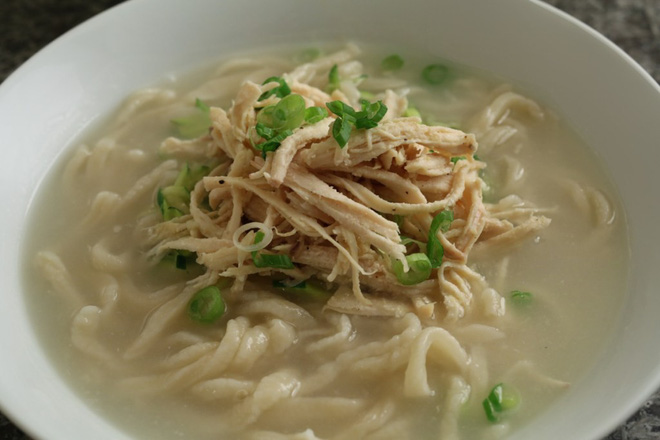
Naeng-kalguksu is the only Korean cold noodle with thick noodles, also made from wheat. The thick, chewy noodles combined with chicken broth with soybean powder and Korean squash served with kimchi, radish, and cucumber create a rich, sweet, and aromatic flavor that is unforgettable for diners.
Chogyeguksu
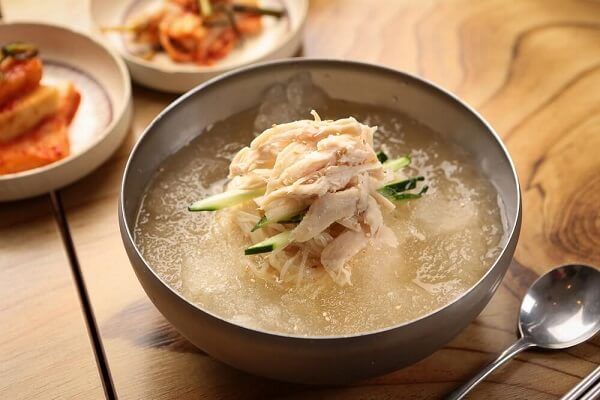
If you are bored with boiled eggs but love the taste of Korean cold noodles, you can try Chogyeguksu. The main ingredient is chicken meat seasoned with vinegar and mustard, along with the broth made from beef, pork or fish, creating a big difference in taste while providing a lot of nutrients. Chogyeguksu is also served with pickled radish and pickled cucumber to enhance the flavor.
Japchae

Japchae is a Korean noodle dish and is considered by Koreans as another version of cold noodles. Although there are also noodle dishes in Vietnam, Japchae has very different ingredients such as sesame oil, shiitake mushrooms, sesame, green beans and beef. This noodle dish is usually light brown from sesame oil which blends harmoniously with the color of other ingredients.
Jeangban Guksu
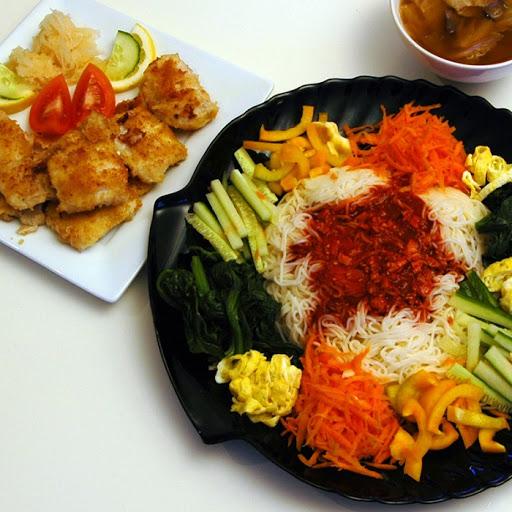
Jeangban Guksu is served with a variety of vegetables and is decorated around the noodles on a large tray, so people often jokingly call it "noodle hotpot". The vegetables served with Jeangban Guksu also have a variety of flavors such as sour, spicy, sweet and bitter, served with a strong spicy sauce to help balance the flavor of the dish.





